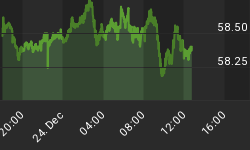8/23/2010 9:07:17 AM
The major indexes closed mixed and market participants are on edge over whether this a bottom or the beginning of a significant slide.
Recommendation:
Take no action.
Daily Trend Indications:

- Positions indicated as Green are Long positions and those indicated as Red are short positions.
- The State of the Market is used to determine how you should trade. A trending market can ignore support and resistance levels and maintain its direction longer than most traders think it will.
- The BIAS is used to determine how aggressive or defensive you should be with a position. If the BIAS is Bullish but the market is in a Trading state, you might enter a short trade to take advantage of a reversal off of resistance. The BIAS tells you to exit that trade on "weaker" signals than you might otherwise trade on as the market is predisposed to move in the direction of BIAS.
- At Risk is generally neutral represented by "-". When it is "Bullish" or "Bearish" it warns of a potential change in the BIAS.
- The Moving Averages are noted as they are important signposts used by the Chartists community in determining the relative health of the markets.
Current ETF positions are:
DIA: Long at $104.00
QQQQ: Short at $45.25
SPY: Short at $109.11
Daily Trading Action
The major index ETFs opened lower and after moving lower for a half hour attempted to move higher but faltered within a half hour and moved steadily lower until noon. From noon onward, the bulls would remain in control as they marched the major indexes higher. The final hour was spent trading sideways with both bulls and bears lacking conviction to move the markets. This left the Dow (DIA 102.14 -0.54), S&P-500 (SPY 107.53 -0.35), the Bank Index (KBE 22.29 -0.08) and the Regional Bank Index (KRE 21.79 -0.12) finishing lower. In contrast, the NASDAQ, NASDAQ-100 (QQQQ 44.92 +0.06), Russell-2000 (IWM 61.15 +0.06) ) and Semiconductor Index (SOX 327.88 +1.46) all finished higher. The 20+ Yr Bonds (TLT 106.04 -0.12) weakened modestly as the long-term bond market appears to be ready to put in a top. NYSE volume was again light with 1.112B shares traded. NASDAQ share volume was light with 1.888B shares traded.
There were no economic reports of interest released.
Implied volatility for the S&P-500 (VIX 25.49 -0.95) finished most of four percent lower after opening much higher. Implied volatility for the NASDAQ-100 (VXN 25.76 -1.14) dropped more than four percent after opening near Thursday's high.
The yield for the 10-year note rose three basis points to close at 2.61. The price of the near term futures contract for a barrel of crude oil fell sixty-one cents to close at $73.82.
Market internals were mixed with decliners leading advancers 7:5 on the NYSE and by a few percent on the NASDAQ. Down volume led up volume by 7:5 on the NYSE while up volume led down volume 5:4 on the NASDAQ. The index put/call ratio rose 0.29 to close at 1.51. The equity put/call ratio fell 0.02 to close at 0.73.
Commentary:
Friday's trading was a game of chicken with bulls and bears hurtling at each other headlong waiting for each other to blink. When the dust settled, both had steered of the asphalt and come to a stop without hitting anything. No-man's land is an appropriate way to describe how the week ended.
The chartist bearish argument is that a long term (one-year old) pattern is ready to be completed which projects a fall of at least 30% from present values. The chartist bullish argument is that the short term pattern is exactly the opposite and the market is headed higher. The fundamental bearish argument is that the economy is headed for a double dip recession and the stock market will move lower in response. The fundamental bullish argument is that the economy will continue to see slow growth, but growth will be maintained and therefore the double dip recession isn't going to happen.
Who is right? We are conflicted on that point. With all the equity indexes currently in downtrend states, we are uncomfortable getting too bullish here. On the other hand, the major indexes remain with a bullish BIAS, which means that the big money players are still leaning bullish. In addition, the leading indexes all moved higher on Friday. As you know, by now, we believe that the markets follow the leading indexes and follow-through action on Monday will be key to determining near term market direction.
We hope you have enjoyed this edition of the McMillan portfolio. You may send comments to mark@stockbarometer.com.
















